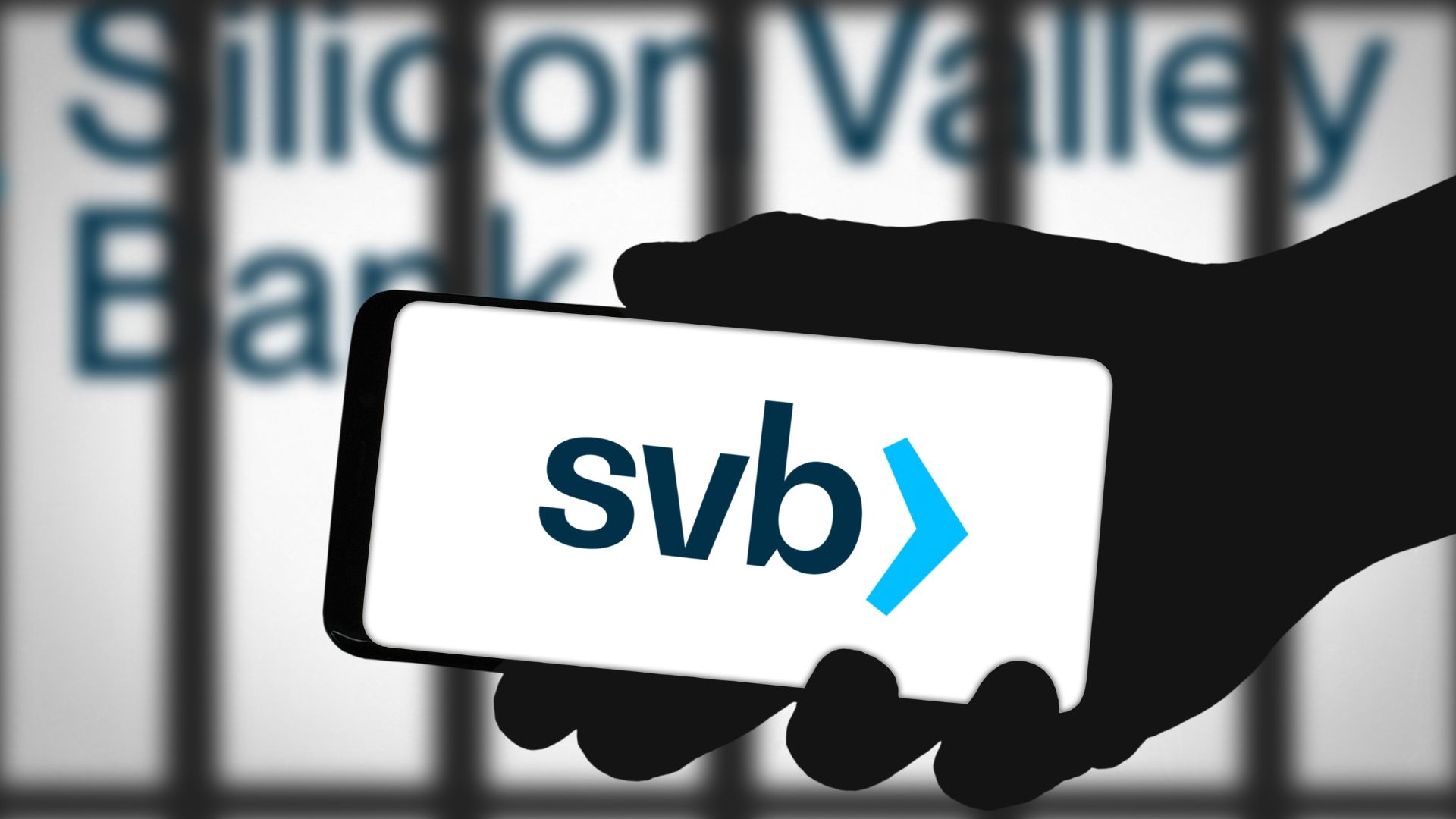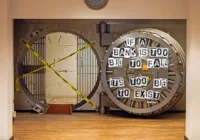On Friday, March 10, California-based Silicon Valley Bank (SVB), was forced to close. SVB was among the top 20 US banks by assets. Its collapse was the second-largest bank failure in US history. Who could have caused SVB’s collapse?
Let us examine the potential culprits one by one.
The Federal Reserve
In an interview with YouTube channel Blockworks Macro, Chris Whalen, an investment banker and author, puts the blame for SVB’s failure at the footsteps of the Federal Reserve, the US central bank. He argues that long periods of near-zero interest rates forced management to venture into longer-dated securities to find acceptable yields without compromising the quality of assets. The speed of subsequent increases in rates, the fastest of the past six cycles, led to steep losses on longer-duration bonds.
While this is certainly true, it is doubtful a central bank should take individual positioning into consideration when deciding on its monetary policy. Unfortunately, rising interest rates usually create casualties, especially after long periods of low rates. Should the fight against inflation, which affects every individual, trump the wish to protect certain institutions against financial harm?
Whalen predicted that the Federal Reserve would cut interest rates in an emergency meeting before financial markets open on Monday morning or face the risk of contagion. Whether that happens or not, it seems Whalen is not entirely right in blaming the Fed for SVB’s collapse.
The Management
Over the past ten years, client funds at SVB grew almost tenfold from $38 billion in 2012 to $375 billion in 2022. Inflows in 2021 alone amounted to $137 billion. From a bank’s perspective, client money inflows represent an increase in liabilities. The bank has to do a corresponding transaction on the asset side of its balance sheet, preferably earning an interest rate higher than the one owed to its clients.
During the period of largest inflows, yields in securities considered risk-free, such as 3-months Treasury Bills, ranged between 0.02% and 0.16%. Management could have chosen to relax standards for loan approvals in order to increase lending to customers. This would have been a recipe for increased credit losses in the future. Low interest rates forced management to venture into bonds with longer maturities in order to achieve acceptable yields on their assets.
Despite such pressures, management does not seem to be able to escape entirely scot-free. Moody’s has severely downgraded SVB, citing “significant interest rate and asset liability management risks and weak governance.” In hindsight, purchasing hedges against a rise in interest rates would have been beneficial. However, those hedges would have eaten further into margins. Management could be forgiven for dismissing the necessity of hedging after experiencing a decade of interest rates below 2.5%. Yet it is worth investigating shortcomings in governance.
The Customers
Social media are rife with comments demanding “no taxpayer bailout for rich clients” or blaming customers for not being aware of the $250,000 limit of Federal Deposit Insurance Fund (FDIC) insurance per account. Many of SVB’s clients were start-ups in the technology and healthcare sectors. Their deposits at SVB often consisted of capital raised from venture capital firms—money intended to carry them through the first loss-making years. These funds are needed for payroll, rent and other current expenses. Losing them would most likely result in the start-up closing down and laying off all employees.
A bank customer should not be required to study the bank’s balance sheet or be familiar with implications of monetary policy decisions on duration risk. During the 2008-09 financial crisis, the FDIC managed to protect all depositors of almost 500 failed banks without using a single tax-payer dollar. The same is expected at SVB, especially given the losses incurred seem manageable in relation to its assets.
The Rating Agencies and the Regulators
A news article by Reuters titled “Silicon Valley Bank’s demise began with downgrade threat” describes how an imminent downgrade in credit ratings by Moody’s derailed a plan by SVB to raise $1.75 billion in fresh capital. For legal reasons, investors need to be made aware of significant developments when purchasing newly issued securities. While the news of a looming downgrade certainly scared off any potential investors, it would be unfair to blame rating agencies for the demise of the bank.
Following the 2008-09 crisis, banking supervision has become stricter. Bankers regularly complain how stringent regulation hampers their operations. “Where Were The Regulators When SVB Crashed” asks the The Wall Street Journal. The article raises valid questions yet it is important to note that regulations require banks to hold a certain percentage of assets in so-called “High Quality Liquid Assets.” These can be quickly turned into cash if depositors want to withdraw funds, which is exactly what SVB did. Its losses did not stem from bad credits or investments in low quality assets, but from unrealized losses on high-quality bonds.
Regulations cannot foresee every business decision any bank might take. Banking is already one of the most regulated industries and more regulations do not seem to be the answer.
The Crypto Bros and the Short Sellers
Bitcoin advocates were quick to celebrate the demise of SVB as a sign the current fiat money system was about to collapse. Meanwhile, Circle Internet Financial, the issuer of stablecoin USDC, confirmed having $3.3 billion out of $40 billion dollars of its reserves stuck at SVB. This revelation led to turmoil in the market of stablecoins, with USDC breaking its $1 peg. It is not without irony that crypto still depends on traditional banking—the system it seeks to liberate its followers from—only to get caught with funds in said system, leading to a bank run on its stablecoin.
Stablecoin reserves are hard to manage since withdrawal could be required in a short period of time. Many banks refuse deposits from stable coin operators for exactly this reason apart from legal considerations.
As usual, short sellers are blamed for driving down the stock price of a failed company. However, short sellers analyze companies in depth and are well informed. Rising short interest (number of shares sold short) is often an indication of trouble brewing. According to an online service, as of February 15, around 6% of SVB shares outstanding were sold short. This is only a slightly elevated figure. If short sellers had any impact on SVB’s share price, it would have been relatively minor.
SVB was Unique
The business model of banking is to borrow short (at low rates) and to lend long (at higher rates). Otherwise, there is no way to accept deposits and make a profit. Net interest margins are slim. It would not make sense to run a bank without leverage. The business model has inherent risks, but those risks are not to be borne by depositors. The depositors themselves are a risk, should they decide to withdraw funds all at once. This is discouraged via the FDIC’s deposit insurance, which has worked very well in the past.
The combination of rapid deposit growth during a low-yield period, lack of lending opportunities, high share of non-insured deposits, and rapidly rising interest rates led to an unfortunate shortfall in risk-bearing capital. Calls on start-ups to withdraw their funds were individually rational, but they led, in aggregate, to a bank run and the irrational outcome of the bank being closed.
Containing contagion is important: the stock prices of other regional banks have suffered. Investors are now concerned about unrealized losses on long-duration bonds at other institutions too. In order to prevent increasing mistrust becoming a self-fulfilling prophecy, the Federal Reserve might be forced to stop the fire from spreading by lowering rates or lending against collateral. The fight against inflation might have to take a backseat.
The views expressed in this article are the author’s own and do not necessarily reflect Fair Observer’s editorial policy.
Support Fair Observer
We rely on your support for our independence, diversity and quality.
For more than 10 years, Fair Observer has been free, fair and independent. No billionaire owns us, no advertisers control us. We are a reader-supported nonprofit. Unlike many other publications, we keep our content free for readers regardless of where they live or whether they can afford to pay. We have no paywalls and no ads.
In the post-truth era of fake news, echo chambers and filter bubbles, we publish a plurality of perspectives from around the world. Anyone can publish with us, but everyone goes through a rigorous editorial process. So, you get fact-checked, well-reasoned content instead of noise.
We publish 2,500+ voices from 90+ countries. We also conduct education and training programs
on subjects ranging from digital media and journalism to writing and critical thinking. This
doesn’t come cheap. Servers, editors, trainers and web developers cost
money.
Please consider supporting us on a regular basis as a recurring donor or a
sustaining member.
Will you support FO’s journalism?
We rely on your support for our independence, diversity and quality.







Comment